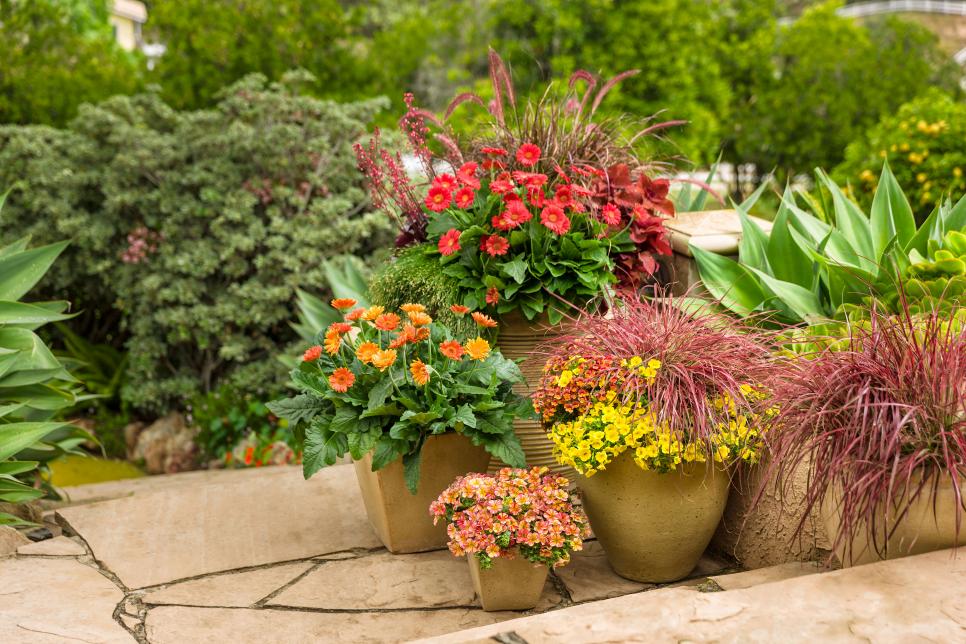Landscape Design – The Essential Steps
When it comes to designing outdoor spaces, take it one steppingstone at a time.
1.Start Up Front

If you’re wondering where to start a landscape transformation, look no farther than your front yard. It’s the first thing that you see driving up to your house, and you can wow guests before they even enter your home. Just remember that curb appeal is important, but no matter how pretty your landscape is, it needs to be functional.
2.Hardscape First

Do all of your hardscaping projects before you set out any plants. Hardscaping can include a porch, sidewalk, driveway, parking areas, decks, fencing, patios and arbor. These projects usually involve construction, which can compact your soil or damage turf and plantings, so it’s important to complete any heavy work before plantings begin.
3.Toil In the Soil

When it is time to garden, amend your soil by adding organic matter such as finely shredded pine bark, peat moss, mushroom compost or leaf mold before setting out plants. Loose, fertile soil will encourage root growth on new plantings and allow them to become established quickly. Clearly define your turf and bed lines. First use a garden hose to lay out your bed lines then use orange spray paint to mark the lines.
4.Plant Next to Your House

Your foundation planting should embrace your house and not cover it. Low-growing shrubs or groundcover should be planted in front of low windows and porches. Larger rounded shrubs or small trees work well planted on the corners of your home. These larger plants will frame up your house and help soften the box-like structure. Remember to create a small bed in your front yard for annual color. Flowers will add instant charm.
5.Move to the Back

Your backyard should be an outdoor living area to enjoy. If you need privacy, install wooden fencing or large shrubs around the perimeter to create walls. Decks and patios make great sitting or dining areas when the weather’s appropriate and they create a nice overflow for guests during parties.
6.Gather Around the Fire

Grilling stations or outdoor kitchens can be used to cook your meals and not heat up the kitchen. Fire pits and outdoor fireplaces are very popular and allow you to enjoy your yard even when there’s a little chill in the air. Both of these options make for easy entertaining or a fun family activity.
7.Wants and Needs

Consider your options and the space you will need. If you have a sunny backyard you might consider putting in a kitchen garden where you can grow a few herbs or vegetables. Just be sure the area you choose receives several hours of sun. Do you need a children’s play area? If so, position it where you can see it from your deck or patio to keep a watchful eye on the young ones.
8.A Little on the Side

Side yards are often narrow strips that are rarely seen. They can be a good place to house your utilitarian needs. Garbage cans, firewood, storage and garden sheds often work well tucked into your side yard. If you have dogs it might be a good place to install a dog run. You’ll probably need a walkway on at least one side of your house so you can easily navigate from the front of the house to the backyard.
9.Choosing the Right Plants

Before planting anything, study your landscape. See where the sun rises and sets. Some plants love the morning sun but will not tolerate western sun. Consult with a local garden center about the plants that you intend to use and know their needs. Plants that need full sun such as herbs, vegetables, roses and many bedding plants require five or more hours of sunlight, so make sure to design your areas appropriately.
10.Plant Shapes and Textures

Add some design elements to your landscape by playing off the shape and texture of plants. Use fine-textured plants that have small leaves or needles next to bold-textured plants that have large leaves. Upright linear growing plants can be positioned next to round or low-growing plants to create interest.
11.Finishing Touches

Adding containers, hanging baskets and window boxes is a great way to incorporate a little more color into a landscape. A large planter or grouping of containers placed by your front door will create an inviting entrance. If you have several planters use a common plant or color in each of them for repetition and continuity. Too many colors combined together can become chaotic looking.
12.Incorporating Your Personality

Add your personal touches to your garden. You can do this with garden art, statues, water features, a birdhouse or architectural fragments. Use low-voltage night lighting to highlight these items, but also position lights along walkways to make maneuvering after dark easy and safe.
13.Maintenance

To keep a beautiful landscape it must be maintained. Keep new plantings watered and mulched. Mulch makes a landscape look finished but it also helps soil retain moisture and keeps weeds in check. Work on your landscape but also enjoy it. Your outdoor areas should be an extension of your home. A beautiful and functional landscape makes your house more appealing and will increase its value.
Website: www.diynetwork.com